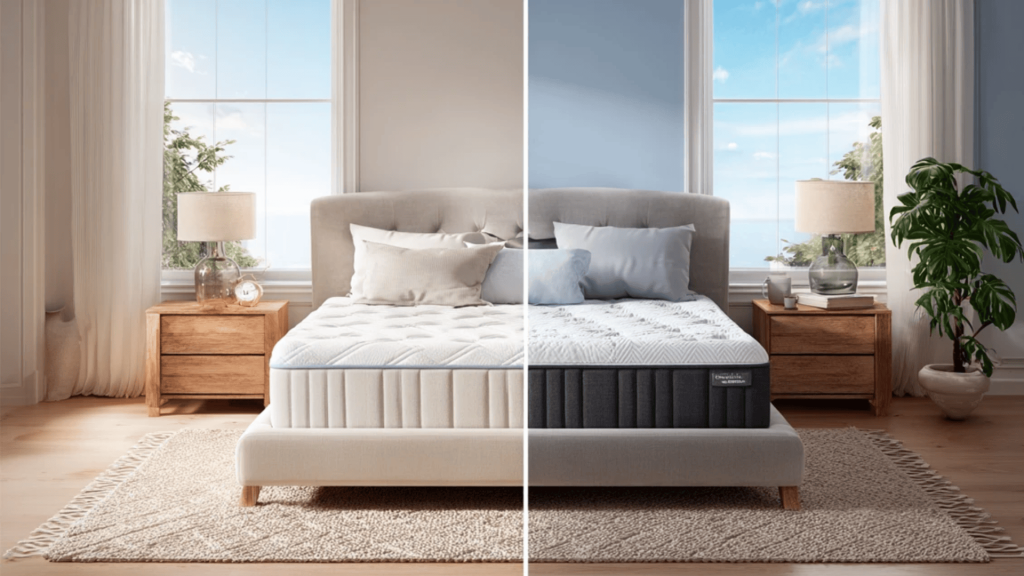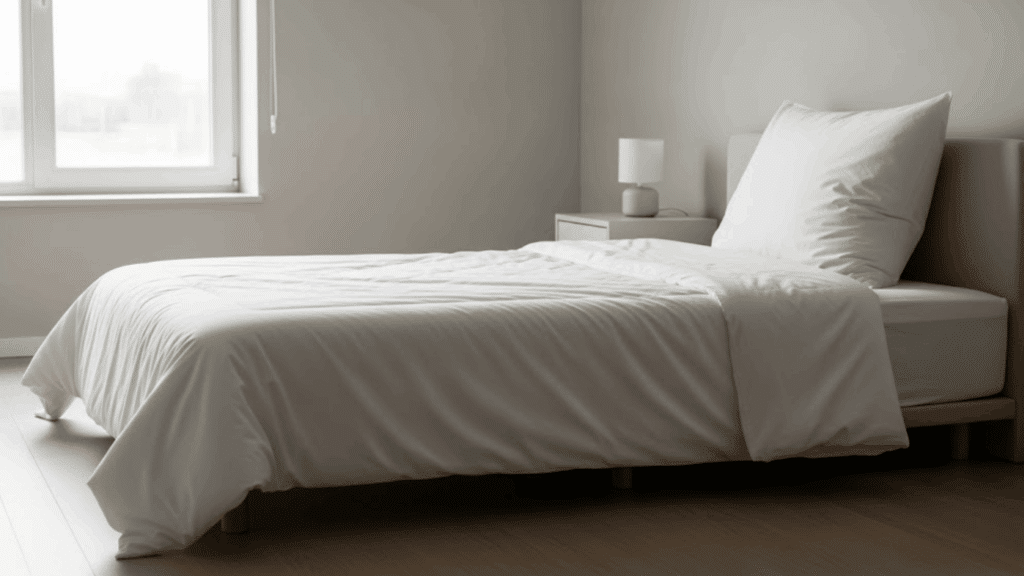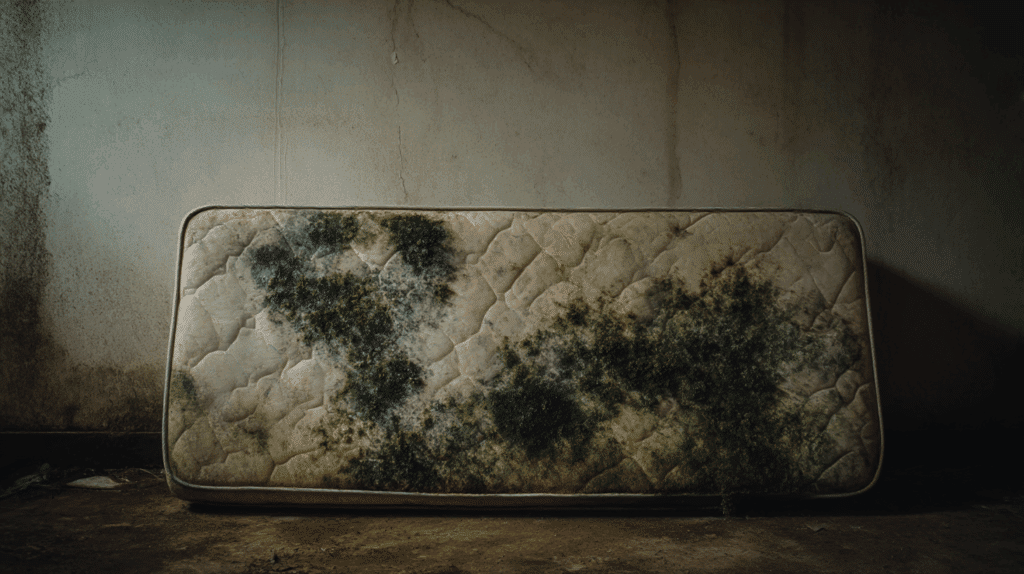When it comes to getting quality sleep, mattress firmness plays a huge role in comfort and support.
A bed that’s too soft can cause you to sink in too deeply, leading to poor alignment and discomfort.
On the other hand, a mattress that’s too firm can feel unyielding, creating pressure points and restlessness.
This is why the plush vs firm mattress debate is so common among shoppers.
In this guide, we’ll explain what a plush mattress is, the firm mattress meaning, and weigh their pros and cons.
By the end, you’ll know which option suits your body type, sleep position, and personal comfort preferences, helping you make a confident, well-informed mattress choice for better sleep.
Mattress Firmness vs Support: What’s the Difference?
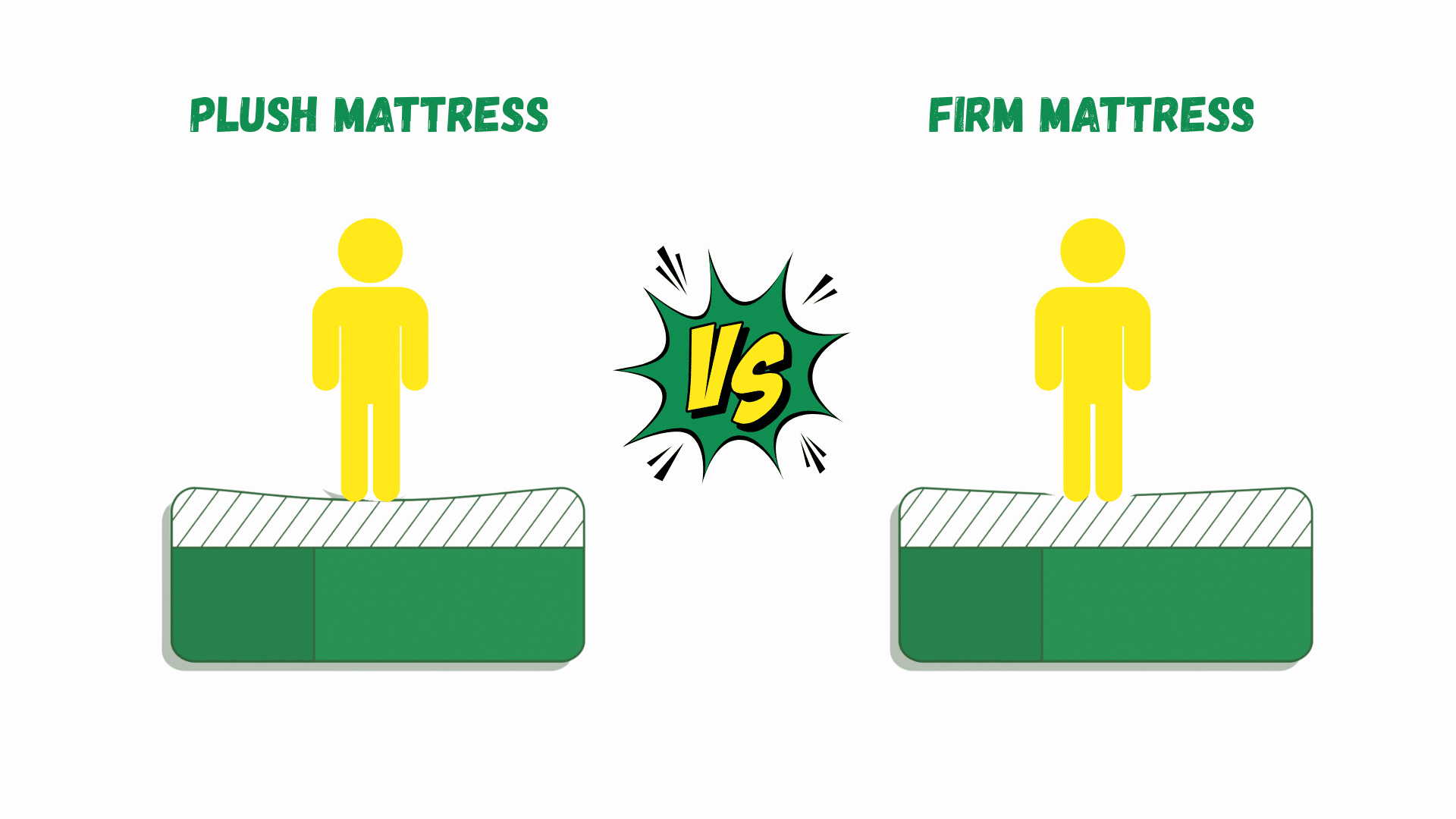
Firmness and support are often mistaken for the same thing, but they describe two different qualities of a mattress.
Firmness is the surface feel, how soft or hard the bed feels when you first lie down.
Support refers to how well the mattress keeps your spine in a healthy, neutral position throughout the night.
A bed can feel soft and still be supportive if it has a strong, well-built core. On the other hand, a mattress that feels firm isn’t automatically supportive if it’s poorly made.
Knowing the difference between firmness and support helps you choose a mattress that delivers both comfort and proper alignment for restful, healthy sleep.
What Is a Plush Mattress?
A plush mattress is designed with thick comfort layers that create a soft, cushiony feel. When you lie down, you sink in more deeply, and the surface contours to your body’s curves.
Many describe it as sleeping in the bed rather than on it. On the firmness scale of 1–10, plush mattresses usually fall between 3 and 5, offering noticeable softness with underlying support.
Pros of a Plush Mattress
- Pressure relief: Eases tension around shoulders, hips, and knees.
- Great for side sleepers: Allows hips and shoulders to sink in while keeping the spine aligned.
- Motion isolation: Absorbs movement, minimizing sleep disturbances from a partner.
Cons of a Plush Mattress
- Heat retention: Thick foam layers can trap warmth, which may bother hot sleepers.
- Reduced mobility: The deep sink can make changing positions harder.
- Shorter lifespan: Softer materials may compress faster, leading to sagging.
Plush mattresses are best suited for side sleepers, lighter-weight individuals, and anyone who enjoys a cozy, hugged sensation while sleeping.
Firm Mattress Meaning
A firm mattress has a solid, supportive surface with minimal sinkage. Rather than contouring deeply, it keeps your body more elevated and promotes even weight distribution.
On the firmness scale of 1–10, firm mattresses usually fall between 7 and 9, offering a stable, on top feel that prioritizes alignment over plush cushioning.
Pros of a Firm Mattress
- Spinal alignment: Ideal for back and stomach sleepers seeking to prevent hip sag.
- Better mobility: Easier to change positions and get in or out of bed.
- Cooler sleep: Less material around the body improves airflow.
- Durability: Often lasts longer due to reduced compression over time.
Cons of a Firm Mattress
- Pressure points: May feel too rigid for side sleepers, especially around hips and shoulders.
- Adjustment period: It can take time for your body to get used to the firmness level.
Firm mattresses are best suited for back and stomach sleepers, heavier individuals, and those who prefer a stable, supportive sleeping surface without the deep sink of softer models.
Plush vs Firm Mattress: Side-by-Side Comparison
| Feature | Plush Mattress | Firm Mattress |
|---|---|---|
| Feel | Soft, enveloping, sink-in | Solid, supportive, and stays on top |
| Best For | Side sleepers, lightweight bodies, and pressure relief | Back/stomach sleepers, heavier bodies, alignment |
| Motion Isolation | Excellent | Good, more bounce |
| Temperature | Warmer, may trap heat | Cooler, better airflow |
| Durability | Shorter (soft foams wear faster) | Longer, less compression |
| Price Factor | Often pricier due to plush layers | Often more affordable for basic models |
Medium-Firm & Hybrid: The Best of Both Worlds
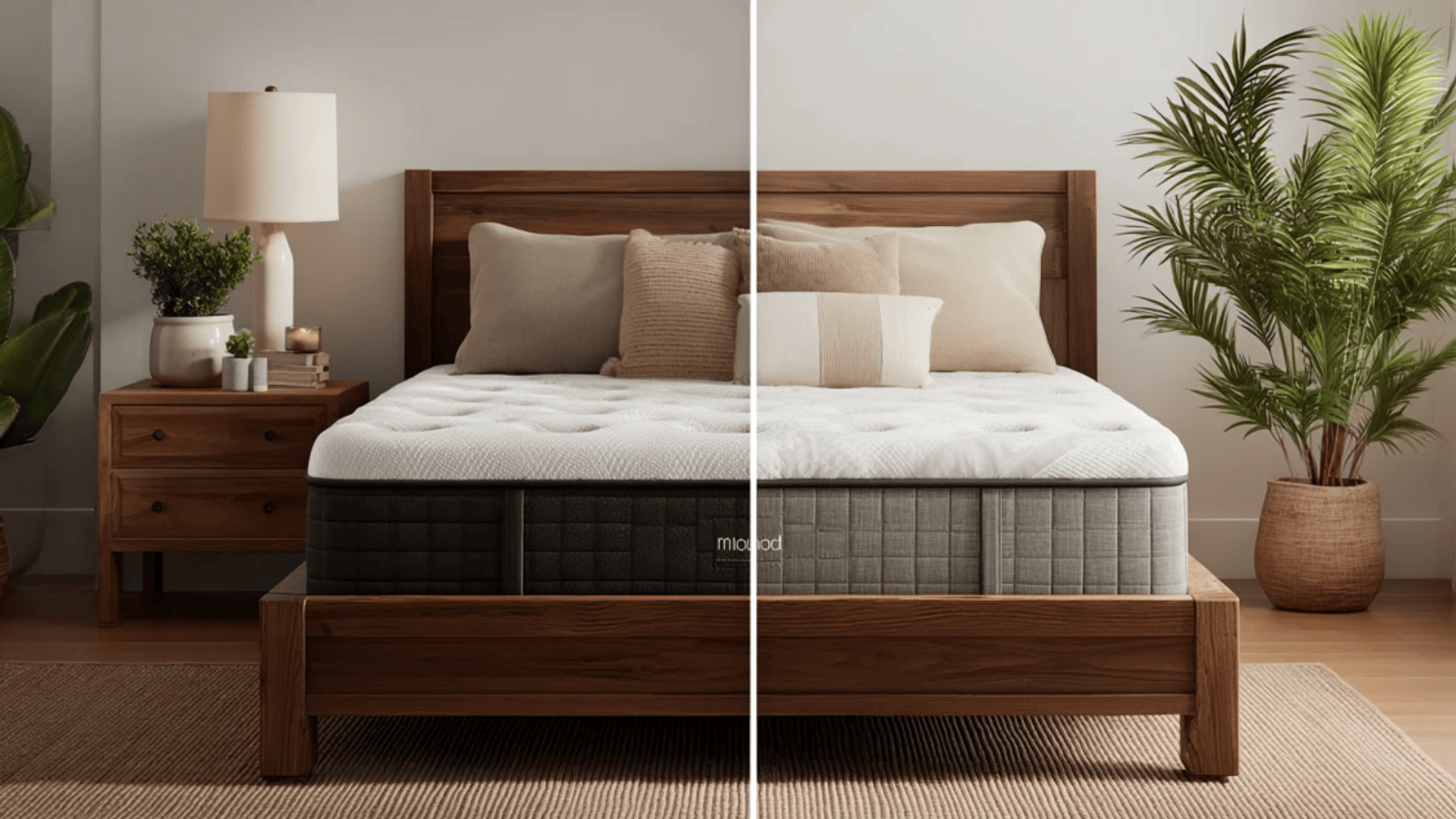
If you find plush mattresses too soft and firm mattresses too rigid, a medium-firm option can be the ideal compromise.
It offers a comfortable balance of gentle cushioning and steady support, making it a versatile choice for many body types and sleeping positions.
Medium-firm is especially popular among combination sleepers and couples who need a “just right” feel.
A hybrid mattress adds another layer of versatility by combining plush foam layers for contouring with a supportive coil base for stability and airflow.
This pairing gives you the pressure relief of a softer bed with the responsiveness and structure of a firmer design.
How to Choose: Step-by-Step Guide
Selecting the right mattress isn’t just about picking plush or firm, it’s about matching your sleep habits, body type, and comfort preferences. These simple steps can help guide your decision:
- Know your sleep position: side, back, stomach, or combination.
- Factor in your weight: lighter bodies often need softer comfort, while heavier bodies benefit from more firmness.
- Decide on feel: consider whether you prefer sinking into the mattress or sleeping on top of it.
- Check temperature needs: plush tends to feel warmer, while firm generally sleeps cooler.
- Test if possible: visit a store or choose a mattress with a home trial period.
- Think long-term: look at durability, warranty coverage, and your overall budget.
Following these steps will help you choose a mattress that not only feels great from day one but also supports healthy, comfortable sleep for years to come.
Who Should Sleep on What?
Your ideal mattress firmness depends on your body type and sleep position. Use this guide to see which option fits you best:
| Mattress | Best For | Why It Works |
|---|---|---|
| Plush | Side sleepers | Cushions to relieve pressure points |
| Lighter-weight individuals | Allows enough sinkage for comfort | |
| People with joint or shoulder pain | Soft surface reduces strain on sensitive areas | |
| Sleepers who like a hugging feeling | Contours closely to the body for a cozy sleep | |
| Firm | Back sleepers | Keeps spine aligned and evenly supported |
| Stomach sleepers | Prevents hips from sinking, reduces back strain | |
| Heavier individuals | Provides strong support and minimizes sagging | |
| Hot sleepers | Sleeps cooler due to less sinkage, better airflow |
Plush suits side sleepers with joint pain; firm supports back and stomach sleepers needing alignment to reduce or prevent back discomfort.
Mattress Longevity & Care Tips
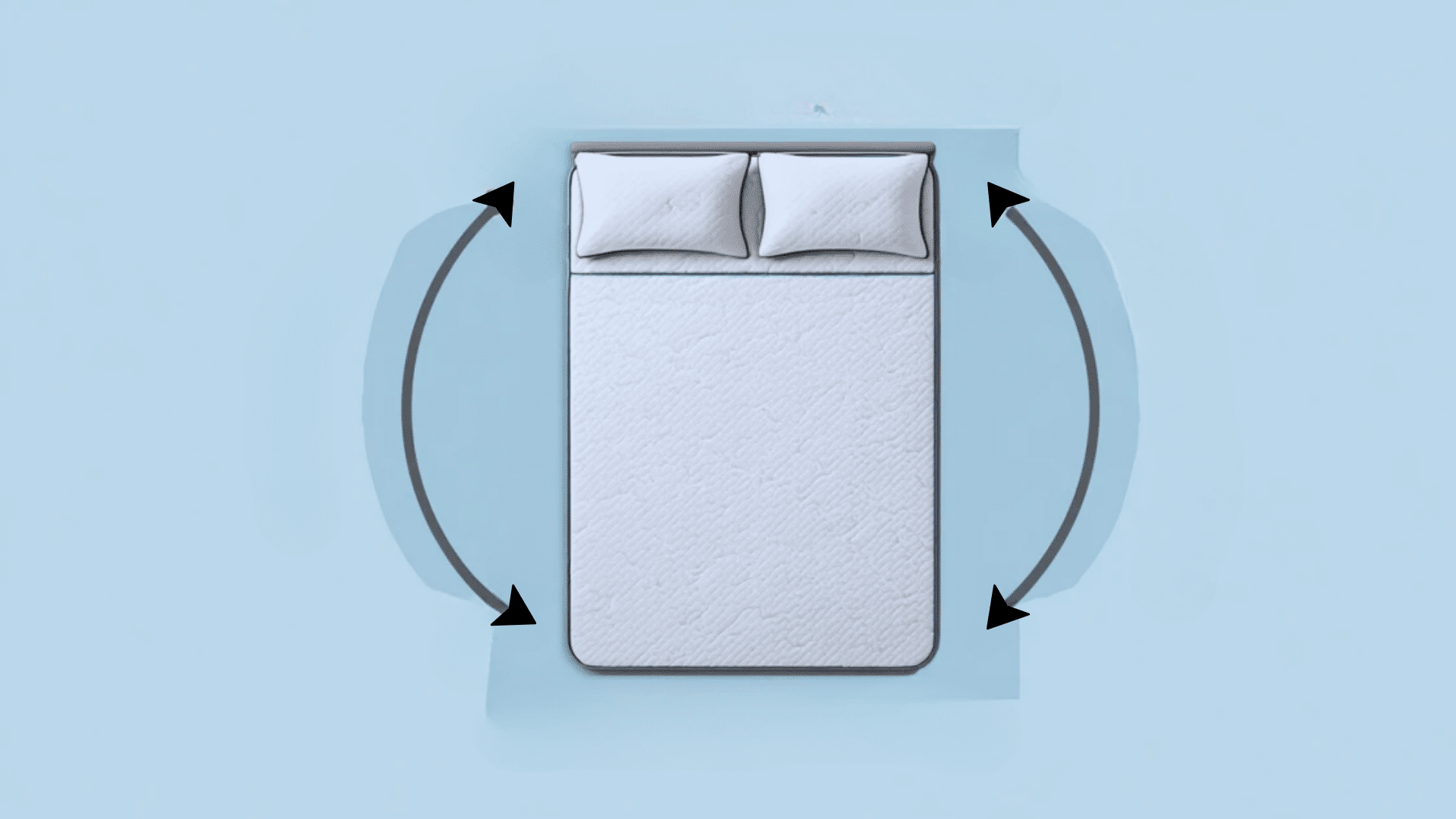
A quality mattress can serve you well for many years if cared for properly. Plush and firm mattresses each benefit from slightly different maintenance routines to keep them in top shape.
Care Tips for Plush Mattresses
- Rotate every 3–4 months to reduce body impressions.
- Use a durable mattress protector to prevent spills and stains.
- Keep on a supportive base to avoid uneven sagging.
- Air out occasionally to prevent heat and moisture buildup.
Care Tips for Firm Mattresses
- Rotate every 4–6 months to ensure even wear.
- Use a breathable protector to maintain cleanliness without trapping heat.
- Pair with a sturdy foundation for optimal support.
- Vacuum periodically to remove dust and allergens.
By following these steps, you’ll help your plush or firm mattress maintain comfort, hygiene, and support for years beyond its average lifespan.
Recommended Mattress Options
Choosing the right mattress is easier when you know where to look:
- Plush Mattresses: Look for designs with thick comfort layers, memory foam, or pillow-top construction for maximum softness and contouring. Shop Plush Mattresses at Serta.
- Firm Mattresses: Choose models with dense support cores, minimal cushioning, and durable materials for long-lasting spinal alignment. Shop Firm Mattresses at Sealy.
- Medium-Firm Mattresses: Ideal if you want a balance between comfort and support — great for couples and combination sleepers. Shop Medium-Firm Mattresses at Saatva.
- Hybrid Mattresses: Combine the softness of foam or latex with the stability and breathability of coil systems. Shop Hybrid Mattresses at Beautyrest.
With these options, you can go straight to the source, compare firmness levels, and choose a mattress that delivers comfort, support, and long-term value.
Final Thoughts on Choosing the Right Mattress
Choosing between a plush vs firm mattress is about more than personal preference; it’s about finding the right mix of comfort and support for your body type, sleep style, and long-term health.
Plush mattresses offer deep cushioning and pressure relief, making them ideal for side sleepers and those who enjoy a soft, cradling feel.
Firm mattresses provide stability and spinal alignment, perfect for back and stomach sleepers or anyone needing stronger support.
If you’re undecided, a medium-firm or hybrid model can deliver a balanced solution.
Test different options, consider your needs carefully, and invest in a mattress that supports healthy, restful sleep for years to come. Your best night’s sleep starts with the right choice. Make it today.
Frequently Asked Questions
Is a Plush Mattress Good for Side Sleepers?
Yes. A plush mattress cushions the shoulders and hips, reducing pressure points and helping side sleepers maintain proper spinal alignment.
Can a Firm Mattress Help With Back Pain?
For many people, yes. A firm mattress can support the spine and prevent sinking, which may reduce or prevent back pain, especially for back and stomach sleepers.
Which Lasts Longer: Plush or Firm Mattress?
Firm mattresses typically last longer because they experience less material compression, while plush mattresses may wear faster due to softer comfort layers.
Should Hot Sleepers Choose Plush or Firm?
Firm mattresses are generally cooler because there’s less sinkage and better airflow around the body, making them a better choice for hot sleepers.

